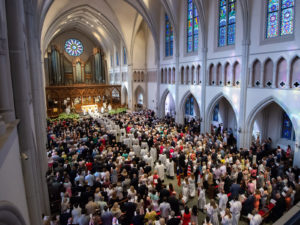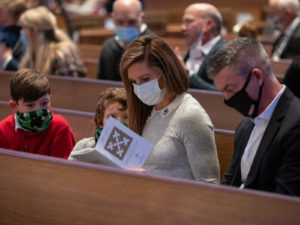“Being on Stage”
St. Martin’s Episcopal Church
Houston, Texas
By Kenneth Ofula
 It has been three weeks since I had my initial phone conversation with the Congregational Representative Kathy Johnson, the lay Minister of Membership Ministries at St. Martin’s Episcopal Church (SMEC). We had a very joyous and promising conversation concerning the Thriving Congregations Initiative, and she extended a verbal invitation to join the upcoming “Membership 101 Class.” This was surprising to me, as I wondered what congregation could expect to attract and induct new members in these times of virtual worship services. On the day of the meeting, September 14th, 2020, I decided to join 20 minutes early, which gave me precious moments to reflect on the welcome count-down images. The first photo had two female and one male clergy dressed in white cassocks and purple stoles, with another male clergy lifting the bread for communion. A large golden crucifix and six candles on golden stands flickered in the background. The second photo is of a female clergy with the communion bread plate stretching her hands towards one of the children as if extending a blessing. The third photo is of an interracial family, and if memory doesn’t fail me, there was a similar image in the previous Sunday’s service bulletin.
It has been three weeks since I had my initial phone conversation with the Congregational Representative Kathy Johnson, the lay Minister of Membership Ministries at St. Martin’s Episcopal Church (SMEC). We had a very joyous and promising conversation concerning the Thriving Congregations Initiative, and she extended a verbal invitation to join the upcoming “Membership 101 Class.” This was surprising to me, as I wondered what congregation could expect to attract and induct new members in these times of virtual worship services. On the day of the meeting, September 14th, 2020, I decided to join 20 minutes early, which gave me precious moments to reflect on the welcome count-down images. The first photo had two female and one male clergy dressed in white cassocks and purple stoles, with another male clergy lifting the bread for communion. A large golden crucifix and six candles on golden stands flickered in the background. The second photo is of a female clergy with the communion bread plate stretching her hands towards one of the children as if extending a blessing. The third photo is of an interracial family, and if memory doesn’t fail me, there was a similar image in the previous Sunday’s service bulletin.
These three photos tell the story of SMEC in a manner that allows a new member like me to gain a sense of who they are and who they desire to be. First, the aesthetic presentation of the clergy’s vestments, communion celebration, and the altar play a great role in telling their story as proudly Anglican in tradition, deliberate in liturgical expression and commitment to the historical elegance of the Gothic tradition. Second, despite its large population, there are deliberate efforts to include children in the Lord’s Table, with specific protocols on how they can participate with the congregation. This is unusual among the Anglican congregations that I have attended, where the focus is on the adult congregation and matters of Anglican liturgical tradition. Third, the family photo presents a family church which serves all generations and desires to be multi-ethnic in their ministry endeavors. I suppose this is a ministry objective that might be more of a potential than a reality considering that SMEC is a majority-White congregation.
At some point during the class the Rector posed the question, “Are you a spectator, are you audience, or do you want to be on stage?” He continued, “[At] SMEC, we want you to be on stage. Because committed membership is our drive.” I have been in North America for more than five years, and I have never heard a clergy talk with such unapologetic conviction and clarity about what they expect from members in their initial contact with them. During Kathy’s portion of the session, she also reminded us that, “You are making a commitment when you are joining St. Martin’s.” Certainly, “being on stage” is part of the essence of SMEC and begins when a new member fills out a form for membership, which includes a spiritual gifts discernment exercise that determines your area of ministry entrance and a pledge card to participate financially. This aggressive and intentional recruitment process sends the message that this is a church that embodies an ecclesial imagination that conceptualizes God as one who invites people to participate as co-workers in the Kingdom by not just attending worship but participating in the work of ministry. SMEC has a shared identity of traditional Anglican orthodoxy, which is a major attraction to most members, and beauty that spills over into their ritual objects, spaces, and performances. With the mission “to make and grow disciples of Christ,” the invitation to “be on stage” obligates members to build relationships internally, locally, and globally despite divergence of positions on some issues.
St. Martin’s Episcopal Church (SMEC) campus is located on 717 Sage Road in Houston, Texas. Founded in 1952, the church has now grown to become the largest Episcopal Church in North America. As at the time of this research, the membership stood at “3,440 baptized and 6,150 confirmed, totaling 9,590 members. Their age ranges are: 19 years and below – 19%, 20 to 39 years – 24%, 40 to 59 years – 24%, 60+ years – 29%” and 3% unknown. They hold six services on Sundays as well as weekly Wednesday Holy Eucharist services with an average weekly attendance for all worship services of 2,677. In total, more than 1,770 services are held each year, and the campus hosts over 18,000 events in a normal year. The church has 200 staff members, which include eight full-time and four part-time clergy. As expected, the numerous events, diverse worship services, and large congregation cannot be managed by this number of staff members alone, however skilled they may be. Thus, SMEC has lay ministers and volunteers cutting across all generations, from children to senior citizens. For example, they have over 100 acolytes who serve in the Sunday services who are mostly 3rd to 12th graders and a vibrant and creative youth team that helped to coin St. Martin’s pastoral care COVID acronym: “Create something; Offer help; Virtually connect; Inspire; Do something outside like walk in the park.” St. Martin’s also has multigenerational choristers and intergenerational systematic discipleship initiatives. The members’ commitment to relationship building and financial stewardship is initiated in the foundational mantra of “be on stage.” Commitment is demonstrated through your “time, gifts, ministries and tithing,” and the indicators are through your “calendar, check book, and energy level.”
The significance of the campus location and facilities to the Houston community and beyond is evident through the Activity Center, which is open for parishioners and the community, and the Hope and Healing Center and Institute, a comprehensive mental health resource supported by St. Martin’s that serves more than 28,800 people a year. Outreach engagements as a whole account for 25% of the church’s budget. One member explains how Saint Martin exemplifies the mission of the church as follows:
Saint Martin was a soldier, right? And he got done with that and softened up and gave himself to God. And not that being in business is [like] being a soldier but, I mean, there’s a lot of . . . very aggressive people in Houston, like [in] oil and gas, and in Texas you’ve gotta get that deal done. You know, put your competitor in the ground or whatever. And you come to St. Martin’s and it’s all softened and maybe you learn that there’s more to life and more of the world than that.
Thus, St. Martin reflects their mission “to know, love and serve God as revealed through Jesus Christ, and to be transformed.” The shape of their ecclesial imagination acknowledges the multiplicity of relationships that they are daily confronted with as a large congregation, and as a result, they aim to build relationships at the micro, macro, and meso levels of the church. In this case, the micro level entails building a personal relationship with God. The meso level involves building relationships with others in the church. Finally, the macro level involves building the relationships between the church and the various facets of the community, ranging from the greater Houston community to the globe.
In the words of the Rector, “the elevator speech for SMEC is we exist to make and grow disciples of Christ.” This perspective makes the church an attraction to people like one interviewee who was “drawn more to St. Martin’s way of doing things.” As this member put it, “St. Martins’ really teaches Christ, preaches Christ, and preaches with purpose in order to not just receive the word of Christ, but to spread it.” A conversation with some members offered clarity about the circumstances under which they joined the church:
[I was] raised Catholic, so what I found interesting and very attractive to me about St. Martin’s was even as a traditional liturgical Episcopal church, I felt very welcome there. I was going through a Catholic education at a time [that had] a lot of turmoil, and that church had a lot of let’s say guilt-based preaching, as I would call it. But when I listened to Russ and Alex and Marty and Sue give their sermons, I felt very welcome, very at home, and St. Martin’s has helped me to really grow more comfortable talking about God and talking about my faith to other people, and [it] certainly provide[s] a solid spiritual background for my children.
Echoing the same sentiments, one member shared his experiences with another church’s high school group of seniors. According to this member, “their message was good, but some of the stuff they said was [preaching] through fear” as opposed to the welcoming, compassionate, and discipleship-oriented preaching at SMEC. It has provided these members with an environment to build their relationship with God through various ministries.
The congregation has also had experiences in which they have seen God at work in their relationships with each other, especially during this COVID-19 season. In one of the interviews, I asked the interviewee to tell me a story that captures what the congregation is all about. She paused for a while and then said, “This is going to be harder than I expected.” With an emotional voice she continued, “You know, I had COVID-19 earlier in the summer, and I was unable to do my normal duties for about 8 weeks.” There was a moment of silence, and I wasn’t sure what to say. She continued, “And, um, because of the Rector’s vacation schedule and other various things the congregation didn’t know for the first few weeks, because it just hadn’t been announced and we were not in-person. Then it was finally announced, and I got inundated with cards and emails, and people bringing meals around and just that kind of kindness.” This was very inspirational to me and brought fresh energy to the interview. Then she exclaimed, “And I think one of the things about St. Martin’s that makes it so special, is that even though it is so big, there is a sense of community, support, and connection.” The same level of support and community was replicated by the clergy and lay ministers to the entire congregation. It was amazing to hear how they reached out to folks through phone numerous times, even outside official duties, asking questions like, “How are you? How’s your family? What can we do for you?” Giving a personal account, a member almost brought us to tears talking about the significance of those calls, because her mom got cancer during all this and there were a number of phone calls made to her led by the Rector and the team. Indeed, an ecclesial imagination of a “family church” that is committed to each other by being intentional in developing relationships through every available platform of interaction is present.
The macro level of the church’s relationship with the community is immense, with 25% of the budget dedicated to outreach and mission programs that take place locally, nationally, and even internationally in places like Uganda. One of the events that left global imprints in SMEC was hosting the G7 delegation in a Sunday service upon President George H.W. Bush’s invitation. One of the interviewees was the head usher then and recounted, “I got a phone call on a Thursday to have a meeting about the service and it is run by the Secret Service.” He continued, “I didn’t really take the full impact of that until that Sunday morning when I saw it all. But most [important] was seeing seven leaders of the largest countries in the world sitting together in the transept at our church. That was very powerful to me and not in a spiritual way, but the impact that it had on our congregation, and I think, the impact our congregation had on them was [a] strong memory.” The church also hosted the state funeral services of both President George H.W. Bush and his wife Barbara, both longtime members of the congregation.
 In response to the realities of COVID-19, the church initiated online livestream of two services on YouTube and Facebook. Personally, I first thought that the church was highly advanced in technology because of their website, but I later rescinded that assessment as an interviewee made it clear that, “St. Martin’s is not really a very tech savvy church.” They continued, “You may or may not have discerned that from the website. But the website is much better than the one we had when it first started. It’s a massive improvement.” Clearly, a swift, concerted effort must have been made by the staff to remedy that situation. The success of this shift by the dedicated staff shows the church’s ability to reach out beyond Houston and create new relationships that have led to the virtual membership 101 class and other opportunities. As one member pointed out, “I was with Russ a couple of weeks ago, [and] he said he’s received hundreds of letters from people around the country who just randomly found St. Martin’s on YouTube . . . then he started getting checks from these people that were so interested in what we’re doing and how we’re going about it.”
In response to the realities of COVID-19, the church initiated online livestream of two services on YouTube and Facebook. Personally, I first thought that the church was highly advanced in technology because of their website, but I later rescinded that assessment as an interviewee made it clear that, “St. Martin’s is not really a very tech savvy church.” They continued, “You may or may not have discerned that from the website. But the website is much better than the one we had when it first started. It’s a massive improvement.” Clearly, a swift, concerted effort must have been made by the staff to remedy that situation. The success of this shift by the dedicated staff shows the church’s ability to reach out beyond Houston and create new relationships that have led to the virtual membership 101 class and other opportunities. As one member pointed out, “I was with Russ a couple of weeks ago, [and] he said he’s received hundreds of letters from people around the country who just randomly found St. Martin’s on YouTube . . . then he started getting checks from these people that were so interested in what we’re doing and how we’re going about it.”
While SMEC does seem to have a strong sense of what it means to build and strengthen relationships with God, each other, and the world, one area of struggle for SMEC appears to exist at a denominational level. In the midst of several debates within the denomination, for instance, on same-sex marriage, I see SMEC holding out hope that while debate and disagreement may continue for a while, their identity will remain rooted in traditional Anglican orthodoxy.
During the pandemic season, SMEC has been tried and tested on its ecclesial imagination and awaits the post-pandemic season to determine whether this imagination can be trusted. That notwithstanding, there remains confidence by the membership that in the various COVID-19 phases, “St. Martin’s has proven to be flexible, resilient, strong, and just smart about the way of response. That will continue whatever [happens].”
While the pandemic has obviously created an absence of in-person interactions, I actually see that it has created opportunities for SMEC to renew their relationship with God through their established online ministry programs. It has even led to stronger relationships with each other as they have worked together as a staff and congregation to navigate the changes that have emerged due to COVID-19. I wonder, given this strong sense of relationships at the micro and meso levels, if for SMEC a focus on relationships outside their church walls at a macro level should be a place of focus. This will mean re-imagining outreach programs and expanding the scope of their programs to take on new online ventures.
For instance, there will be concerns that some people may not go back to church because of the comfort and conveniences experienced through the online services. However, continuing with the virtual services will give worship opportunities to people who won’t be able to go to church for quite some time because of age or underlying conditions and to those who might be sick and can’t make it to church. This managed well might in fact be a good thing since the same ecclesial imagination of God inviting people to participate as co-workers in the Kingdom can build a new congregation that is beyond geographical borders.
Therefore, understanding that returning to in-person services and events will not erode the already established online relationships, SMEC has the potential grow the congregation, which in turn becomes another “imagined stage” for SMEC. The main task will be how to be “on this stage” by taking advantage of the dispensation for new online ministry opportunities. This will mean initiating functional ministry structures with staff for SMEC’s “online stage” congregation and inviting the members to be co-workers with God in making and growing disciples for the world.


